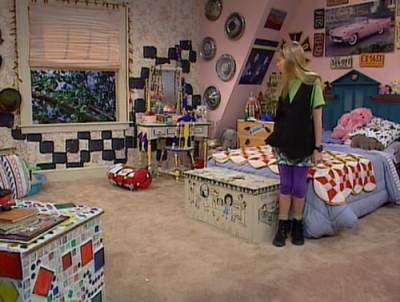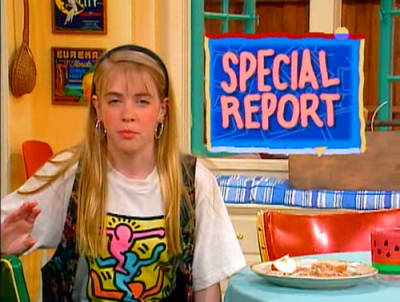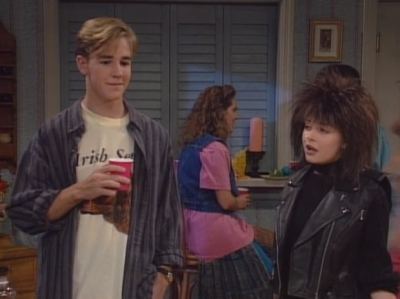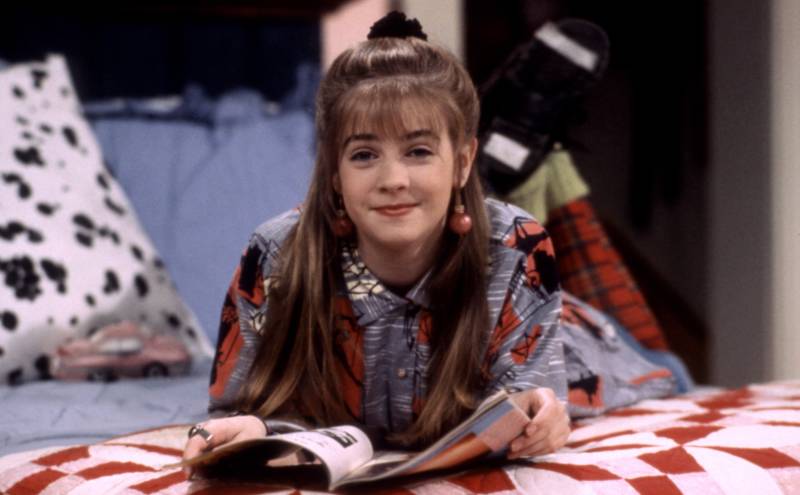But "People were skeptical about whether boys would watch a girl," showrunner Mitchell Kriegman told BuzzFeed in 2014. "That was the biggest stake in the ground, and that’s what I had gone for in pitching it."
Kriegman got his way, kicked down that door, and promptly proved the skeptics wrong. Melissa Joan Hart wasn't just a girl, of course. She was that rare child star -- eager and endearing without coming off cloying, poised but not overpolished -- in whom young teens truly saw themselves. It probably helped that she was actually 15 when the show started. Mind you, this was back in the halcyon days of children's entertainment, before it became normal for child stars to launch international perfume empires by the age of 12; before the Disney pipsqueak-to-sexpot pipeline we know all too well had become commonplace. Clarissa was a girl, yes, but she was also the everykid.

In the end, though, Kriegman succeeded not because of his star. The show rang true because he and his writing team remembered what it felt like to be 14 years old.
Clarissa's bedroom was her kingdom, with hubcaps on the walls, They Might Be Giants posters, and even a pet alligator named Elvis in the corner (though he did not, sadly, make it past Season 1). Her out-there and yet totally-with-it fashion sense (hello, Keith Haring t-shirt!) captured that age when expressing one's nascent individuality feels like all that matters; caring about clothes was a playful art form, not a sign of vapidity. Google "Clarissa fashion" for a taste of the approximately 4000 style blogs that still craft posts intended for adults about how to dress like her, two and a half decades later.

In a similar vein, Clarissa's feuds with her snot-nosed brother, Ferguson, might have been over funny or petty-seeming issues -- per Wikipedia, a typical plot summary was "Ferguson convinces himself he's a genius after an IQ test. Clarissa tries to prove him wrong by joining him on the game show Brain Drain" -- but the stakes always seemed to be life-or-death, which is, of course, how life feels when you're a teen. There were no easy Full House-style hugs at an episode's conclusion. They were enemies, and the struggle was real.
In an interview with Mental Floss, Kriegman revealed that the universe in which the show existed was the result of meticulous planning: He even crafted a show "bible" for the writers to reference as necessary, featuring characterizations of Clarissa like "[She's] the Ferris Bueller of girldom, but also kind of Calvin of Calvin and Hobbes." What Clarissa had in common with both those worlds was a tacit understanding that the kids -- while they often had little control over their lives -- were always running the show. Recall, too, that tween and teen culture wasn't quite the dominant market force back then that it is today. A show that plainly recognized teens' intelligence was a rare and precious thing indeed.
And then, of course, there was Sam. Clarissa's relationship with her best friend (who had his own entrance music and appeared casually via ladder into her bedroom window years before Dawson's Creek would rip off that particular trope) was aspirational in part because of its total innocence; it remained platonic for the duration of five seasons, nary a forced WB-style love triangle in sight. Here they are plotting their visit to a Pearl Jam show (!).
Clarissa's parents, meanwhile, often the subjects of the "B" storyline, were sometimes helpful -- but mostly clueless in a way any kid immediately recognized as authentic. (And, yes, if you happen to have grown up in Berkeley or somewhere similar, it was doubly fun to commiserate with both kids' distaste for their mother's cartoonishly gross health food obsessions. Tofu milkshakes, anyone?)
The sitcom also featured a few stylistic hallmarks that would later become commonplace: Clarissa's persistent breaking of the fourth wall, for example, is the clear lo-fi ancestor to the central conceit of iCarly, the late-aughts Nickelodeon show about a teenage girl who has her own web series, thus her speaking directly to the camera.
Clarissa didn't need the pretense of a TV show. Clarissa was the TV show. The whole point was to turn everyday life into an adventure -- which of course made the Clarissa board game a natural merchandising effort. It was, in a sense, a straighter Pee-Wee's Playhouse...with way less sexual subtext, and way more guest appearances by James Van Der Beek.

Some 25 years after the show's debut, much of what made Clarissa a hit might seem like a given in teen TV. But perhaps the best thing about the show was actually an absence: In an era when preachy Very Special Episodes were almost mandatory for television aimed at adolescents, Clarissa was never moralizing. The show dealt with typical teenage topics like crushes, bullying and, you know, not getting good seats at the Pearl Jam show. But if there had to be an overarching message to the series, it was that staying true to yourself -- to your weirdo, Doc Martens-loving, alligator-having self -- was always, and would always continue to be, the most important choice you could make.
It may have worn its geekiness more plainly on its sleeve, but Clarissa was running with a baton that Daria and even My So-Called Life's Angela Chase would pick up some six years later. It showed a generation of kids that being different was way cool. And for some of us, at that age, that was all we really needed to hear.





